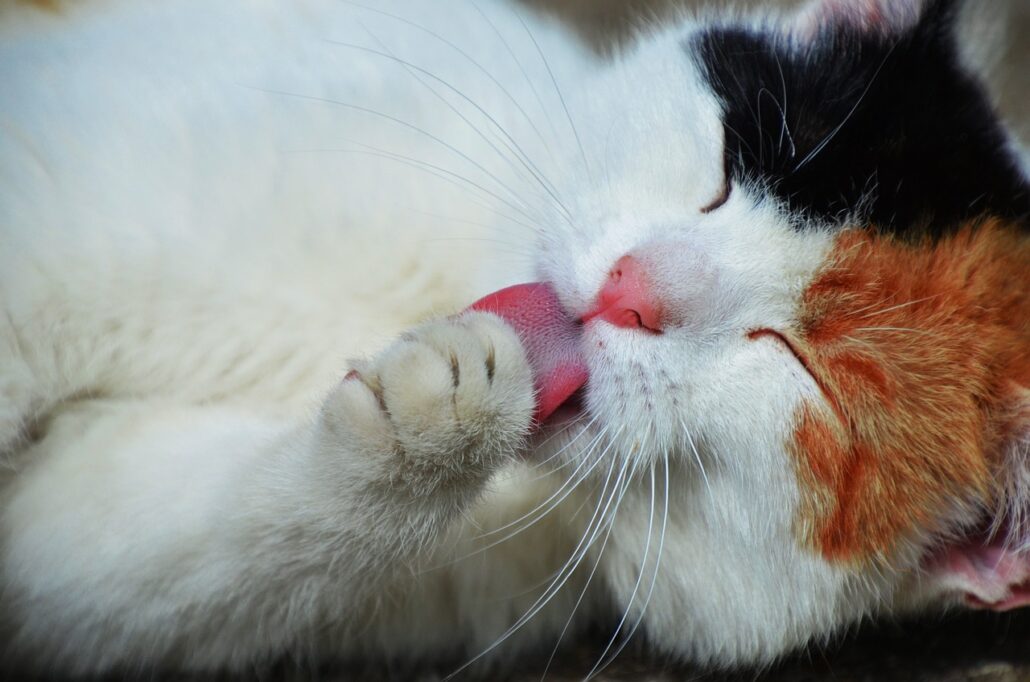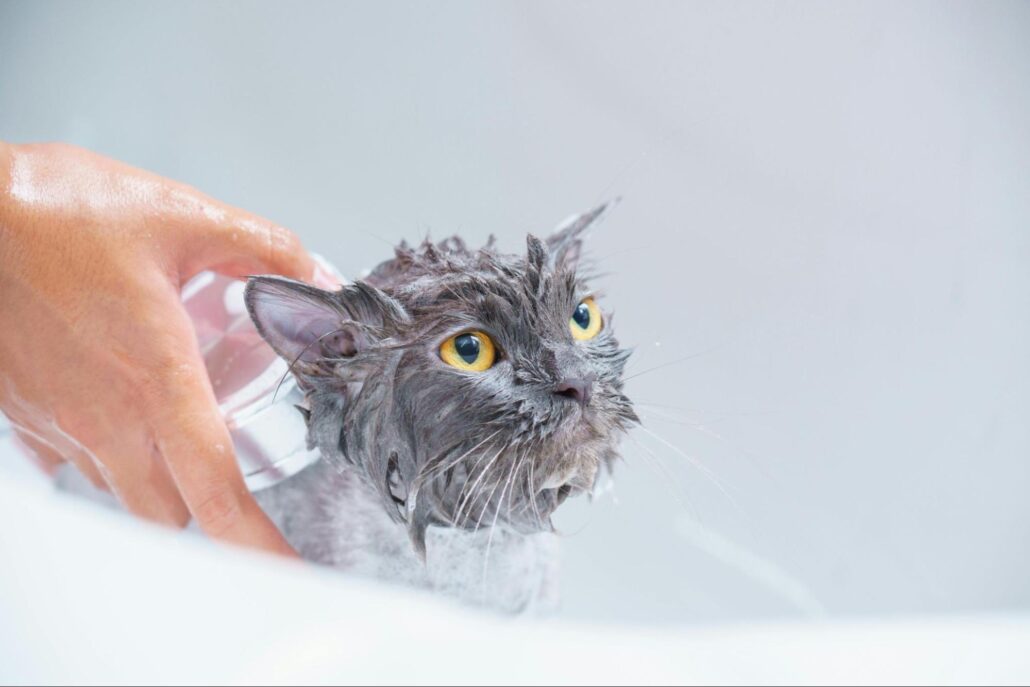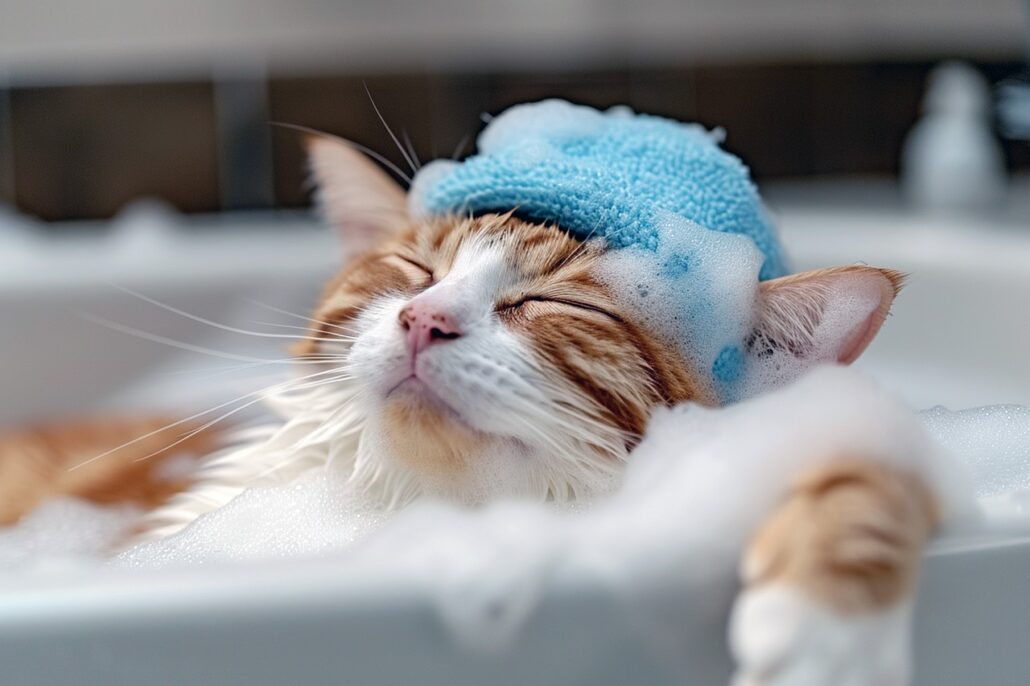How Often Should I Bathe My Cat?
Your feline does a great job cleaning itself. But that doesn’t mean they’re excused from bath time. So how often should you bathe your cat?
It’s a purr-plexing question that deserves an easy answer: every 4-6 weeks, on average. But your cat might need bathing a little more or even less often than this in certain situations.
Cats need baths to remove excess fur and maintain healthy skin. And while they might fear the water or fight you tooth and nail with every wash and rinse, know that you’re doing what’s best for your favorite feline.
Here’s how to know how often to bathe your cat (and maybe help them learn to love the water!).

Why Do Cats Need Baths?
Your cat’s tongue is unique. Not only does it help them eat, but it’s also dotted with small barbs that help them remove excess fur and stay clean. But sometimes, they get into messy situations that even their skilled tongues can’t clean.
Also, giving your cat a bath is a great chance to get rid of unwanted hitchhikers, like fleas and ticks. These hidden nuisances can wreak havoc on your cat’s skin and fur and can be hard to get rid of.
Plus, the more hair you can help them remove, the fewer hairballs you might find on your floor!
Benefits of Professional Cat Grooming and Bathing
We know that bathing your “Nervous Nellie” is about as much fun as a root canal. That’s why there are professional groomers like Kitty Spaw to do the dirty work for you. Professional services give you and your furry feline several advantages:
- A complete spa-like setup to give your cat the royal treatment
- Custom bathing and grooming according to your cat’s needs
- Professional groomers who prioritize your cat’s safety and sanity
- A clean-smelling kitty (no more eau de litter box scents!)
- Fewer hairballs and less shedding
Plus, you won’t have to be the bad guy when it’s time to clean kitty. In fact, your cat might be extra happy to see you when their spa day is over!
How to Tell If Your Cat Needs a Bath
Your cat grooms itself every day. But if you notice any of the following signs, it might be time for bathing reinforcements:
- Greasy, tangled, or matted fur
- Unpleasant odors
- Visible dirt or debris in their fur
- Excessive scratching or licking of certain areas
- More frequent hairballs than usual
You might also want to start the spring or summer season with a bath for good measure. This can help remove thick, excess fur to cool your feline and help them shed their winter coat.
How Often to Bathe Your Indoor Cat
Indoor cats tend to stay cleaner for longer. While it’s recommended to bathe cats every 4-6 weeks, you might be able to extend the time between baths.
Keep in mind that elderly or overweight cats may struggle to groom themselves as well as they once did. These cats might require more frequent baths, even if they stay indoors.
How Often to Bathe Your Outdoor Cat
Outdoor cats are exposed to more dirt, toxins, parasites, and other elements compared to indoor cats. If you have an outdoor cat, stick to the recommended 4-6 weeks unless you notice a specific problem that might require immediate attention.

How to Bathe Your Cat
If you’re bathing your cat yourself, you’ll need to gather a few supplies:
- Cat-specific shampoo (do not use human shampoo for your feline, as it may include essential oils that are toxic to cats or may upset your cat’s ideal pH)
- A towel
- A brush
- A large bucket or tub filled with warm (not hot) water
- Calming music (which also muffles extra noises)
Keep all of your supplies within arm’s reach. Ideally, you can choose an enclosed space like a bathroom so your cat can’t give you the slip.
Follow these steps to make bathtime as quick and painless as possible (for both of you).
- Keep the Bath Water Running
Sudden noises like turning on the water might startle your cat. Enter the bathing area with the water already running so your cat gets used to the sound.
- Wear Them Down
Try to wear out your cat before you capture them for bathtime. Break out their favorite toys and let them expend some energy. This can help reduce any struggles so things can proceed swimmingly.
- Give Them a Quick Brush
Remove as much hair and dander as possible before you dip them in the water. This will help you save time during the bathing process.
- Rinse, Lather, Rinse
Start slowly, as cats are naturally averse to water. Avoid spraying them in the face. The key is slow, gentle movements so your cat knows there’s nothing to fear. Once they’re thoroughly wet, squeeze some cat shampoo on your hand and massage all around their fur, then thoroughly rinse the shampoo away so it doesn’t irritate their skin later.
Many groomers recommend placing cotton balls in their ears to prevent water from getting in. You can remove the cotton balls after you’ve rinsed your cat and are ready to dry.
- Cuddle Your Kitty with a Dry Towel
All done! Wrap your kitty in a warm towel as you gently dry their fur. They might not stick around until they’re completely dry, but try to dry them as much as possible to prevent dirt and debris from sticking to their wet, clean fur.

Kitty Spaw: The Easiest Way to Bathe Your Cat
Kitty Spaw gives you a convenient, safe way to bathe your cat without the mess. Our Certified Feline Master Groomer takes every opportunity to give your kitty the royal treatment, from trimming nails to using specialized cat shampoos and conditioners that will make their fur shine!
Get in touch today for a free quote or to schedule an appointment.




